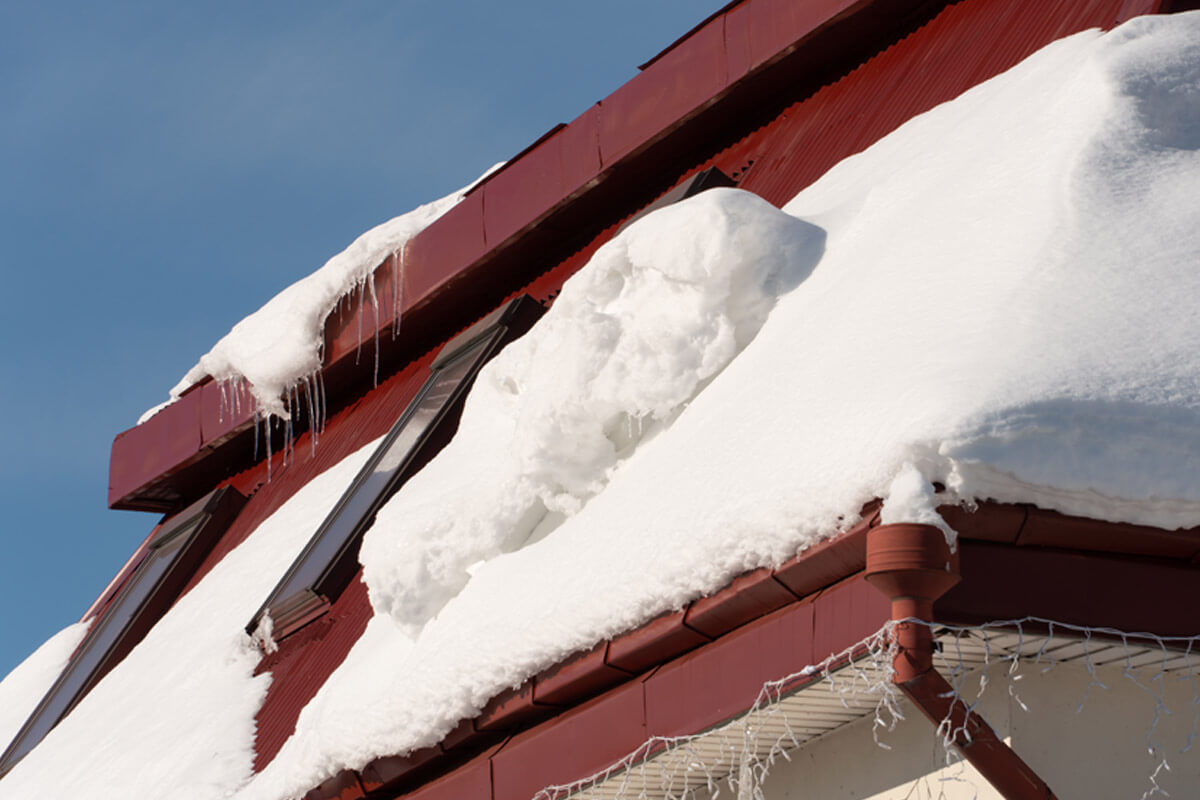
Do Metal Roofs Stand Up to Severe Weather Storms?
Metal roof installations increase by a reported 2 billion square feet in the U.S. each year because they are cost-effective and resist extreme weather. Although Southern states, Midwest, and the Southwest have embraced the benefits of metal roofing systems, New Englanders continue to mull their ability to withstand harsh weather in the Northeast.
That’s a fair and thoughtful position, given other parts of the country experience more temperate or simply different weather conditions. As every New Englander knows, we get pounded by every conceivable type of severe weather at one time or another. The good news is that metal roofs have the capacity to withstand the worst conditions.
1. Metal Roofs Handle New England Blizzards
The Blizzard of 1978 dumped record-setting snowfall on Boston (27.1 inches) and Providence (27.6 inches) in less than two days. The heavy accumulations weighed down a significant number of flat roofing systems, and some sustained damage. Asphalt-shingled roofs often allow ice and snow to cling.
During annual snowfalls and blizzard conditions, it’s not uncommon for property owners with flat roofs to hire crews to shovel for fear of collapse. And asphalt shingle roof owners have to worry that ice and snow mounds could lead to leaks and water damage.
Sloped metal roofs, by contrast, allow packed snow to slide off. The coatings used to protect steel and aluminum products from scratching serve as protection against snow and ice building up. These slick protective overlays act like a child’s slip and slide, making them a preferred choice in areas prone to heavy snowfall.
2. Metal Roof Withstand Heat
Given the high number of metal roofs across the South and Southwest, common sense would indicate they must withstand heat. Although New Englanders do not experience the number of hot days places like Georgia, Florida, and Texas may, days above 100 degrees occur during summers. For instance, New Hampshire routinely tops 95 degrees, and the record high stands at 106 degrees. Neighboring Massachusetts has a record high of 107 degrees.
Metal roofing systems are constructed using relatively lightweight materials. The panels naturally reflect harsh UV rays, thereby reducing the need to increase air conditioning usage to maintain indoor conditions. Adding to their energy efficiency, metal roofs generally employ insulation boards and vapor barriers to prevent unnecessary humidity from entering the building.
3. Metal Roof Stand Up To High Winds
It’s important to understand that the prevalent asphalt shingle roofs are perhaps the least effective in terms of resisting high winds. Although we don’t have the hurricane threats of people in Florida and the Gulf Coast, New Englanders experience seasonal Nor’easter that can drive winds above 70 mph. Asphalt shingles are typically torn off, and rubber roofs often sustain cuts from flying debris during these regional storms.
A professionally installed metal roof is secured by sturdy fasteners and the smooth sloped surface doesn’t allow winds to grab and lift sections. Property owners with metal roofs are far less likely to file an insurance claim after a high-wind incident.
Yes. Metal Roofs Stand Up To New England Weather
If you are considering replacing an aging roof or planning new construction, metal roofing systems perform under adverse weather conditions. At Dutton & Garfield, we work closely with property owners and developers to design metal roofing systems that meet their needs. Contact the experts at Dutton & Garfield to schedule a consultation today.
